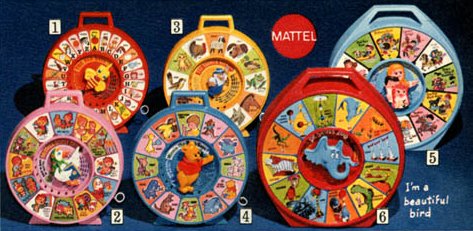
With the Fall season approaching, I wanted to get some insight into what forthcoming books will be most worthy of our handselling focus. Autumn herself agreed to share her expertise with us, “lest,” as she said to me, “the ephemeral leaves cling to the trees while that which should be evergreen is cast away.”
Kenny: Thank you so much for making time for us.
Autumn: It’s my pleasure, Kenny.
Kenny: One thing I’ve always wondered is whether Fall starts on September 22nd or simply the first time a person sees a reddening leaf?
Autumn: Both. The strict calendar dates have their purpose but seasons have their own shape and nature of growth and decline which extend beyond those fixed boundaries.
Kenny: I see. Speaking of calendar dates, are both the Northern and the Southern autumnal equinoxes your responsibility? Also, do your duties extend to areas which don’t experience a proper autumn? Arizona for example.
Continue reading
Great Catalog Idea
Josie Leavitt - August 13, 2014
Every bookstore strives to create unique newsletters and catalogs, and oftentimes we are successful. But there are times when we could use a little help. This is where the ABC Children’s Group sponsored by the American Bookselling Association, comes in. Every year they create a full-color catalog for all member stores to use for the whole year. The catalog, Best Books for Children and Teens, features titles vetted by members, so it’s not about publishers paying for advertising, this is a catalog of books we all feel strongly about recommending in our stores.
Continue reading
this ORQ. (he great book!)
Elizabeth Bluemle - August 11, 2014
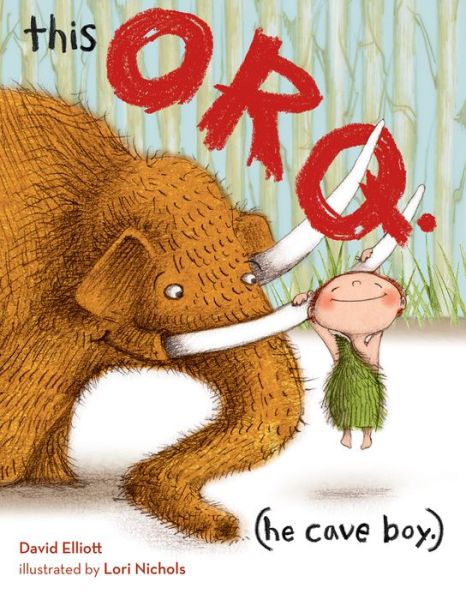
There are hundreds, if not thousands, of picture books published every year, and many of them are good. Some of them are great. And a few of them hit the picture book sweet spot jackpot by managing to provide:
- a perfect marriage of text and art
- phenomenal kid appeal
- read-aloud deliciousness
- art that invites poring over
- new discoveries in repeated readings
- heart, joy, playfulness, suspense, reassurance, and humor
- and, yes, jokes for the grownups, too.
this ORQ. (he cave boy.) by David Elliott, illustrated by Lori Nichols (Boyds Mills Press) hits the jackpot with its hilarious (and wry) caveman-speak text, huge heart, and utterly lovable illustrations by newcomer Lori Nichols (who also wowed us earlier this year with her debut picture book, Maple, published by Penguin/Nancy Paulsen).
Continue reading
A Busman’s Holiday
Josie Leavitt - August 8, 2014
I have recently been traveling in New England and, as I’m wont to do when I’m on holiday, I visit other bookstores. I do this for several reasons, chiefly, I love bookstores and it’s nice to be in one and not see everything that needs to get done, but rather, just enjoy the store. When I’m in a store I become one of those people who sniffs the books, who stands back and admires the display, wonders about the choices for face outs and ponders what sections are the good sellers.
I was in Bethel, Ct., and stopped by Byrd’s Books. I heard about this store through our trade 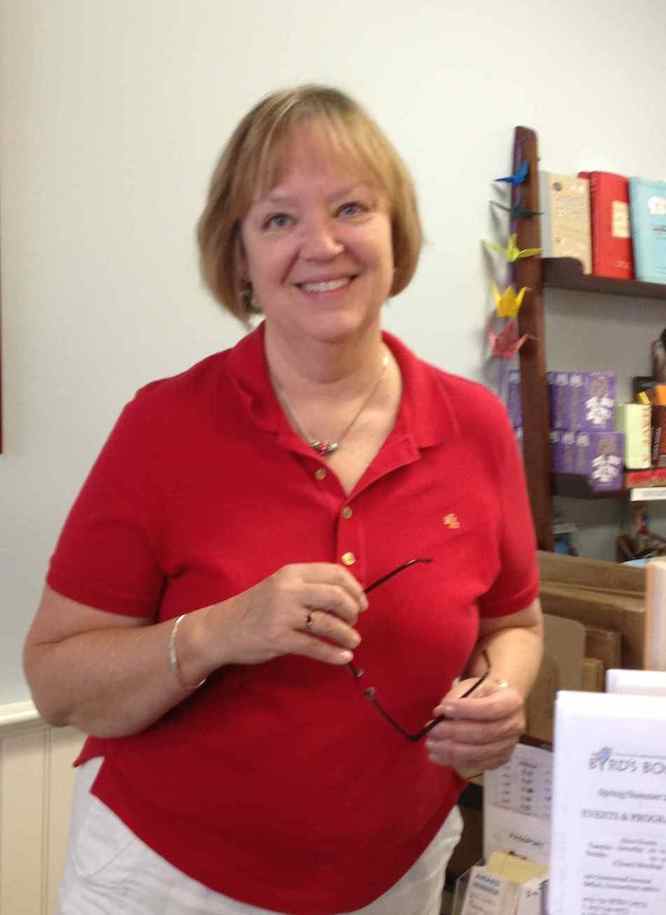 association and have been reading their very good e-newsletter, so I was very curious to see the store. The day I happened to visit, they were busily preparing for their Find Waldo Local party. My timing really couldn’t have been worse. I arrived at three, just under an hour from their party with an expected attendance of 50 kids and their parents. They had moved most of the shelving out of the middle of the store (they had smartly gotten all their floor units on wheels, so they could move them out of the way for events) and the owner, Alice Hutchinson, kept apologizing for the store “being in disarray.” I assured her I was used to pre-event chaos. And I have to say her idea of chaos was my idea of calm, everyone bustled about with purpose but not in a frenzy. Despite this, she still managed to show me around the store.
association and have been reading their very good e-newsletter, so I was very curious to see the store. The day I happened to visit, they were busily preparing for their Find Waldo Local party. My timing really couldn’t have been worse. I arrived at three, just under an hour from their party with an expected attendance of 50 kids and their parents. They had moved most of the shelving out of the middle of the store (they had smartly gotten all their floor units on wheels, so they could move them out of the way for events) and the owner, Alice Hutchinson, kept apologizing for the store “being in disarray.” I assured her I was used to pre-event chaos. And I have to say her idea of chaos was my idea of calm, everyone bustled about with purpose but not in a frenzy. Despite this, she still managed to show me around the store.
Continue reading
The Magician’s Trilogy
Kenny Brechner - August 7, 2014
 Ever since the publication of the first book in Lev Grossman’s Magician’s Trilogy, children’s booksellers have pondered whether a book so profoundly concerned with coming of age was appropriate for younger readers. Worth considering since they are the folks bracing themselves for that very passage. With the publication of The Magician’s Land, the third and final volume in the trilogy, it is time to have a stab at an answer.
Ever since the publication of the first book in Lev Grossman’s Magician’s Trilogy, children’s booksellers have pondered whether a book so profoundly concerned with coming of age was appropriate for younger readers. Worth considering since they are the folks bracing themselves for that very passage. With the publication of The Magician’s Land, the third and final volume in the trilogy, it is time to have a stab at an answer.
“Sheep get like shepherds, and shepherds like sheep, it is said,” and this is particularly true of epic fantasies. Their narrative form and structure reflect their substance and creation. The task of completing the quest successfully is shared by author and protagonist.
Continue reading
Wanted: Beautiful Fairy Picture Books
Elizabeth Bluemle - August 5, 2014
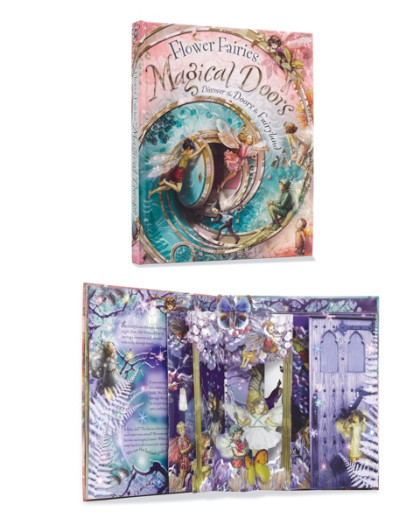
Flower Fairies Magical Doors: Discover the Doors to Fairyopolis by Cicely Mary Barker (Frederick Warne & Co)
I was working in the back room when the voice of Flying Pig bookseller Sandy floated in from the front desk. “You know what’s hard to find that you’d think there would be a lot of?” she asked. “Beautiful fairy storybooks, the kind I would have loved and lost myself in as a child.”
You’d think this would be a flooded field, but actually, most of the gorgeous fairy picture books we used to carry have now gone out of print.
Continue reading
Requesting Author Events with Grids
Josie Leavitt - August 4, 2014

The book world runs six months ahead of the calendar, which is why we all order our Christmas books in July and why our event proposals for winter 2015 are due in the coming weeks. In the old days (yes, I just said that, I think after almost 18 years, the old days were sufficiently different and far enough away that I can get away with that) , an event proposal really boiled down to begging reps to send authors and illustrators to us. It seemed there was more possibilities then because things felt more flexible. Now, everything is computerized: stores fill out event grids on Edelweiss and hope tohear “yes” back from someone in the publicity department.
Continue reading
It’s Official—The Funniest Bookseller in Vermont!
Elizabeth Bluemle - July 31, 2014
Okay, “funniest bookseller” wasn’t actually the category for which Josie Leavitt won top honors; it was Best Stand-Up Comic, in the annual contest run by Vermont’s arts weekly newspaper, Seven Days. The Seven Daysies are coveted awards covering 177 topics ranging from Best Restaurant to Best Place to Get Naked. Seven Days takes voting seriously; you have to vote in at least 50 of the 177 categories for your votes to count. This year, around 10,000 Vermonters sent in their picks for “best,” and Josie won Best Stand-Up Comic! The Flying Pig is bursting with pride.
This is actually Josie’s second win; she tied with “The Logger,” Rusty DeWees, in 2011, the first year that Seven Days included the stand-up comedy category. Winning the category’s first year was fitting, since Josie has been so instrumental in creating the now-blooming Burlington stand-up scene. As Seven Days put it so aptly and wonderfully in the award announcement this year:
Psst! All Books Are Interactive
Elizabeth Bluemle - July 29, 2014
 Recently, I came across catalog copy for a book with a big starburst sticker on the cover that boasted that this book had some extra feature that made it “INTERACTIVE!”
Recently, I came across catalog copy for a book with a big starburst sticker on the cover that boasted that this book had some extra feature that made it “INTERACTIVE!”
I’m a little mystified by the impulse to add moving parts or noises to books to make them seem more interactive than they already are. Reading a book not only requires a complex set of skills involved in decoding words and making meaning from them, but involves the imagination, engages predictive thinking, and—depending on the content and challenge of the material—invites reflection and the processing of new information. Readers create the world of a book alongside the author. Reading lights up the brain all over.
The truth is, the more “interactive” a book is, the less a reader is required to engage meaningfully with it. When you add bells and whistles that do the work for you, you’re actually making it less interactive, neurologically speaking.
Readers necessarily interact with a book by creating mental images and making connections as they read; the brain is quite active while reading. In fact, reading is apparently one of the top ways to exercise your brain, along with learning another language, meditating, and getting some physical exercise.
So the interactive label seems more like marketing hype to hook consumers more than something that adds true value to a book. I’m not a total curmudgeon; as a young reader, I adored books that did fun things. Bennett Cerf’s pop-up joke books were read to tatters, and for a solid year, the See-n-Say was my favorite word-related toy. Heck, I *still* encounter pop-up and lift-the-flap books that knock my little reader self’s socks off. But I don’t think anyone would have claimed that the pop-up book or the See-n-Say made me a better thinker.

Somewhat serendipitously for this post, Salon just ran an article by Sara Scribner titled, “Your iPhone addiction will rot your kid’s brain,” with subtitle teasers “iPads and other devices aren’t really interactive. An expert on the need to read for kids.” In the article, Scribner interviews Jason Boog, author of Born Reading: Bringing Up Bookworms in a Digital Age — From Picture Books to eBooks and Everything in Between. This new book takes a look at interactivity from a slightly different— and just as important—angle: the interactivity that happens when a child and adult read and discuss books together.
I haven’t read the book yet, but will look forward to seeing what it has to say about young readers and books and devices.
As for the type of “INTERACTIVITY” shouted by burst-shaped stickers on book covers, well, I’m not sure how many parents are taken in by that label. But I’m entirely certain that they will be able to assess its relative value, for better or worse, after a single reading.
An Interview with Amy Zhang
Kenny Brechner - July 28, 2014
We (children’s frontlist buyers that is) cannot fail to note the dramatic rise in the publication of YA books whose authors share the ages of their protagonists. Most of us have our presumptions about the why and the what of these books.
I assume, for example, that one reason behind the sudden rise is a line of thinking which goes that young readers will connect with young authors. This seems to be a strong presumption. I also assume that there is a good chance that the writing may not be quite the thing. This is often the case, and yet some novels appear that are highly polished and strong on style. The excellent work of Stefan Bachmann is a good example. Perhaps not coincidentally, Bachmann’s editor, Virginia Duncan, has been working with another high school age prodigy, Amy Zhang. Zhang’s debut novel, Falling into Place, is coming out this fall.
Falling Into Place recounts, through multiple first-person narratives, what appears to be a very unlikely suicide attempt of a popular and forceful high school girl Liz Emerson. Liz is controlling and harmful to those within her sphere, seemingly more the person to drive someone else to suicide rather than attempt to take her own life. The book explores her psychological dynamics through physics metaphors, suggesting that the lack of resistance to her will ultimately rebounds back on her.
With its young author and its theme of attempted suicide, Falling into Place has two popular tropes going for it. The richness of its language and its conceptual depth are both a surprise and a delight. To explore Falling into Place here’s a Q&A with its 18-year-old author.
Kenny: If you could recommend a book for your character Liz Emerson to read, what would it be?
 Amy: I’d give her The Giving Tree by Shel Silverstein. I’d leave it on the brown couch in her basement on New Year’s Eve, Because I think she needs a love story. I’d also give her The Perks of Being a Wallflower. I think it would make her feel less lonely.
Amy: I’d give her The Giving Tree by Shel Silverstein. I’d leave it on the brown couch in her basement on New Year’s Eve, Because I think she needs a love story. I’d also give her The Perks of Being a Wallflower. I think it would make her feel less lonely.
Kenny: Did her suicide attempt need to occur for Liz to have her emotional epiphany, or could that have been achieved in another way?
Amy: I think the problem with Liz was that she didn’t believe in epiphanies or at least not for herself. She didn’t think there was a solution, just an ending, and she went with the ending. I do think she should have talked to her physics teacher more. In every school there are teachers who don’t want to be there and teachers who frankly are not very good at their job, but there are also teachers – lots of them – who genuinely care about every single one of their students, and Mr. Eliezer was one of them. For starters, he could definitely have explained the whole “cause and effect ” thing to Liz again. And he would have listened, he would have listened to anything, and maybe eventually Liz would have told him everything. My teachers were everything in high school. I’d go to their rooms to steal candy or to have makeshift therapy session or to ask questions or to decorate their rooms on their birthdays. I don’t know if she could have had the emotional epiphany, but I think she should have known to go to Mr. Eliezer instead of her guidance counselor for help.
Kenny: If you could change one thing in one of your favorite books, what would it be?
 Amy: I’d put my name on the cover of The Book Thief instead of Markus Zusak’s – kidding! Hmm. I’m honestly not sure that there is anything I’d change about it. I’ve honestly sat here wracking my brain and flipping through my copy for about an hour now, and it’s one of the most perfect and complete books I’ve ever read. Maybe a few more of death’s little comments? I remember that when I read it the first time there would be a few pages without the excerpts and I’d catch myself thinking “Gosh, I really miss Death.”
Amy: I’d put my name on the cover of The Book Thief instead of Markus Zusak’s – kidding! Hmm. I’m honestly not sure that there is anything I’d change about it. I’ve honestly sat here wracking my brain and flipping through my copy for about an hour now, and it’s one of the most perfect and complete books I’ve ever read. Maybe a few more of death’s little comments? I remember that when I read it the first time there would be a few pages without the excerpts and I’d catch myself thinking “Gosh, I really miss Death.”
Kenny: The physics principles really work as metaphor. Is it simply metaphor, though, or is there an actual casuistry between physics and the psychology of emotion?
Amy: Honestly? My physics and psychology classes were both primarily lecture classes with teachers that never checked notes I spend most days writing in the margins of my note books. So I’m not sure how well I can answer this question. Back in March I was doing a project for psychology about cognitive biases with a focus on the 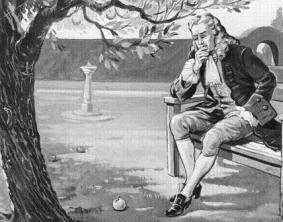 fallacy of the single cause, and I came across this Tolstoy quote: “When an apple ripens and falls what makes it fall? Is it that it is attracted to the ground, is it that the stem withers, is it that the sun has it dried up, that is has grown heavier, that the winds shake it, that the boy standing underneath it wants to eat it? No one thing is the cause.” Every event is caused by infinite factors but our minds are wired to fixate on one. I think that’s what makes physics, at least at the high school level, so conceptual. You have to focus on one factor, gravity or direction or mass, to solve the problem so you disregard all the others. I think the actual connection between physics and emotion is that fault in our heads, the tendency to name a scapegoat to match one effect to one cause. That’s what Liz did. She named herself as the scapegoat, and she didn’t want to be the cause anymore.
fallacy of the single cause, and I came across this Tolstoy quote: “When an apple ripens and falls what makes it fall? Is it that it is attracted to the ground, is it that the stem withers, is it that the sun has it dried up, that is has grown heavier, that the winds shake it, that the boy standing underneath it wants to eat it? No one thing is the cause.” Every event is caused by infinite factors but our minds are wired to fixate on one. I think that’s what makes physics, at least at the high school level, so conceptual. You have to focus on one factor, gravity or direction or mass, to solve the problem so you disregard all the others. I think the actual connection between physics and emotion is that fault in our heads, the tendency to name a scapegoat to match one effect to one cause. That’s what Liz did. She named herself as the scapegoat, and she didn’t want to be the cause anymore.
Kenny: The unidentified narrator was a marvelously ingenious and effective device. Avoiding the horrible shoals of a spoiler, can you tell us a bit about whether this device was always envisioned in the story or developed at a later point?
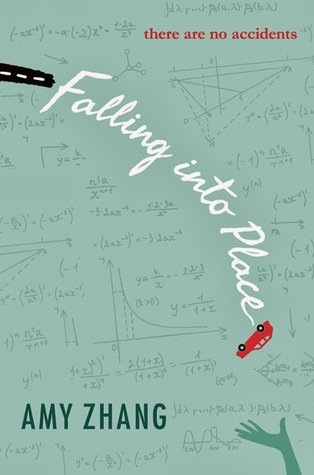 Amy: The first version of Falling into Place was a short story about a girl who committed suicide, who left behind a journal explaining her reasons why through Newton’s Laws of Motion. I knew it was a story that I wanted to develop into a novel-length work. A few months later, I wrote a story with an unknown narrator who watched a little girl grow up. I had saved both stories in the same file, so when I went to open the first to outline the project that would become Falling into Place, the second caught my eye. I had been unsatisfied with the narration of the first short story, so I played with the idea of combining the two short stories, and I had a lot of fun with it!
Amy: The first version of Falling into Place was a short story about a girl who committed suicide, who left behind a journal explaining her reasons why through Newton’s Laws of Motion. I knew it was a story that I wanted to develop into a novel-length work. A few months later, I wrote a story with an unknown narrator who watched a little girl grow up. I had saved both stories in the same file, so when I went to open the first to outline the project that would become Falling into Place, the second caught my eye. I had been unsatisfied with the narration of the first short story, so I played with the idea of combining the two short stories, and I had a lot of fun with it!
Kenny: What can you tell us about your next book?
Amy: I’m working on a book tentatively titled This Is Where the World Ends, which is about a boy who’s obsessed with apocalypses and a girl whose goal in life is to make the entire world fall in love with her. There’s spray paint and a coffee shop full of origami cranes and a dictionary of made-up words, and I can’t wait to share it with everyone!
Kenny: Thanks, Amy.
Amy: My pleasure.


